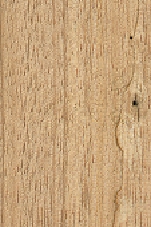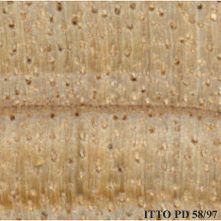
SENTUL (Sandoricum koetjape)
Trade Name
Sentul
Scientific Name
Sandoricum koetjape (Burm. f.) Merr.
Family
MELIACEAE
Common Names
Sentul; Santol (Philippines); Kra thon (Thailand); Kompeng reach (Cambodia); Sau dau (Vietnam); Katon (Indonesia); Katon (Thailand); Katon (Myanmar); Thitto (Myanmar); Klampu (Sarawak); Kecapi (Indonesia)
Scientific Name Synonyms
Sandoricum vidalii Merr; Sandoricum nervosum Blume; Sandoricum maingayi Hiern; Sandoricum indicum Cav.
Description Of The Tree
Botanical Description
It is a semi-deciduous, small to large tree up to 45 m tall. The bole is sometimes straight, but often crooked or fluted, branchless for up to 18 m, up to 75 cm in diameter, usually with buttresses up to 3 m high.
Natural Habitat
Sandoricum koetjape is reported in lowland dipterocarp forests and also in kerangas. It occurs scattered in primary, sometimes in secondary rain forests, up to 1,200 m of altitude.
Plantations Available?
It is widely cultivated in tropical Asia, plantations are also reported in tropical America.
Non Timber Uses
The powdered bark shows anti-cancer activity. Limonoids isolated form the seeds shows insecticidal activity.
Wood Identification
Anatomic Description Of Wood
Wood diffuse porous. Occasionally vessels with colored deposits. Vessels per mm2 5 to 20. Simple perforation plates. Vessel-ray pits similar to intervessel pits in size and shape. Intervessel pits small, 7 micras or less. Occasionally apotracheal axial parenchyma diffuse and/or diffuse in aggregates. Axial parenchyma aliform. Axial parenchyma confluent. Occasionally prismatic crystals in chambered axial parenchyma cells and/or in fibers. 3 to 4 cells per parenchyma strand. 5 to 4 to 10 rays per mm (medium). Occasionally larger rays more than 4 seriate. Occasionally body ray cells procumbent with over 4 rows of upright and/or square marginal cells (Kribs-I). Body ray cells procumbent with mostly 2 to 4 rows of upright and/or square Fibers very thin walled. Occasionally fibers with distinctly bordered pits. Fibers with simple to minutely bordered pits.
-
 Wood Macro Photo Radial Plane
Wood Macro Photo Radial Plane
-
 Wood Micro Photo Of Transversal Section
Wood Micro Photo Of Transversal Section
Availability
Cites Status
Unrestricted
General Wood Description
Odor
Seasoned wood has no characteristic odor or taste.
Color
The heartwood is pale red, yellowish red or yellowish brown, distinct from the sapwood.
COLOR INDEX (1=Black, 7=Light yellow,white)
6
Grain
Straight or interlocked grain is often found in this species.
Texture
This wood has a somewhat medium texture.
Natural Durability
The wood is non-durable when exposed to the weather.
Natural durability index (1= Very high durability, 7=Vey low durability)
5
Resistance To Impregnation
The heartwood is impermeable, but the sapwood is amenable to preservative treatments.
Wood Physical Properties
Basic Density or Specific Gravity (O.D. weight/vol. green) (g/cm³)
0.52
Air-dry Density (Weight and volume at 12%MC) (g/cm³)
0.57
Total shrinkage Tangential (Saturated to 0%MC) (%)
5.7
Total shrinkage Radial (Saturated to 0%MC) (%)
3.5
Drying Defects
Ease of Drying: Drying is moderately difficult to difficult; special care is systematically needed. Drying Defects: Risks of checks and distortions when interlocked grain is present. Kiln Schedules: Schedule proposed as a reference by comparison with well known species taking into account to the general technological behavior of this species.
Recommended Dry Kiln Schedule
UK-E
Dimensional stability ratio (Total Tangential Shrinkage %/Total Radial Shrinkage %)
1.6
Wood Chemical Properties
Wood Mechanical Properties
Bending Strength (MOR),12%MC (kgf/cm²)
620
Stiffness (MOE) 12%MC (kgf/cm²)
78500
Compression parallel to fiber 12%MC (kgf/cm²)
419
Shear strength radial 12%MC (kgf/cm²)
115
Workability
Sawing
Sawmilling of this species is reportedly easy.
Rotary Veneer Cutting
This species is reported to have good characteristics for lamination.
Sliced Veneer
This species is reported to have good characteristics for lamination.
Planing
It is easy to plane, giving good results.
Turning
30
Finishing
It takes a smooth finish.
Polishing
This species is reported to be easy to polish.
REFERENCED USES
End Uses Summary
HOUSING GENERAL, FURNITURE AND CABINETS, PLYWOOD AND VENEER, TURNING, TOOLS, tool handles, agricultural tools, OTHER AND MUSICAL INSTRUMENTS, handicrafts
General Housing
- 10 - Silica in Timbers
Furniture Cabinets
- 21 - Tropical timbers of the world. Part III-Southeast Asian and Oceanian Species.
Panels, Veneers
- 25 - Directory of Timber Trade Malaysia
Turning
- 30 - Embassy of Honduras in Japan
Tools
- 42 - Utilización Industrial de Nuevas Especies Forestales en el Perú.
Tool Handles
- 43 - Maderas de Bolivia (Características y Usos de 55 Maderas Tropicales)
Agricultural Tools
- 44 - Atlas of Peruvian Woods
Handcraft
- 66 - Maderas latinoamericanas. VII. Caracteristicas anatomicas. propiedades fisicomecanicas, de secado, y tratabilidad de la madera juvenil de Cordia alliodora (Ruiz & Pav. Oken.)
Please Provide Information To View Producer Information